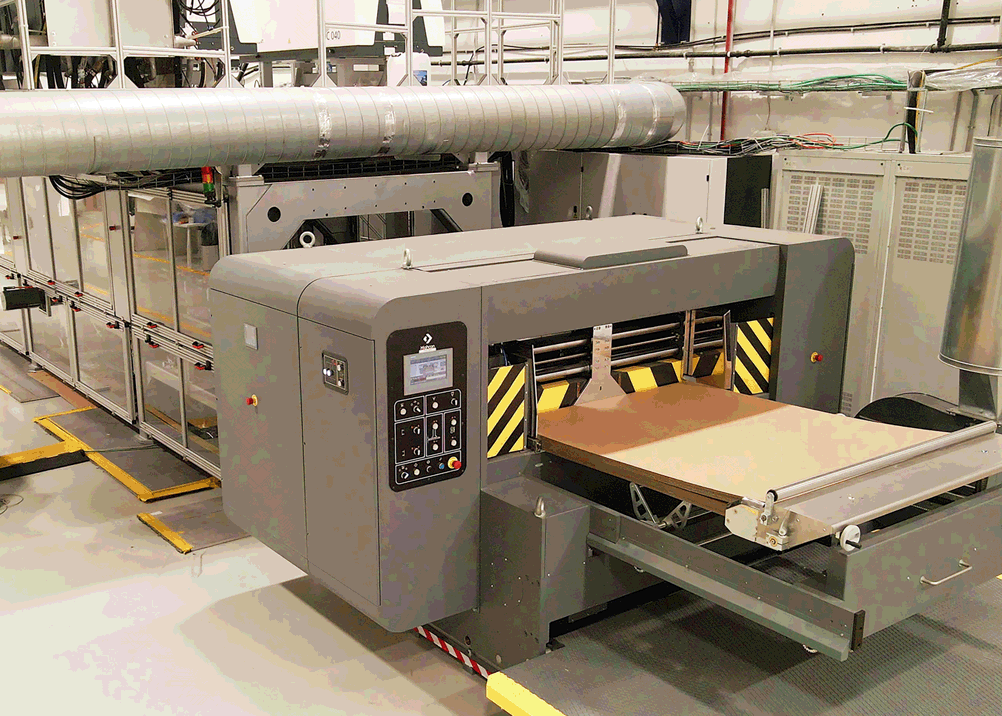At Drupa the Israeli manufacturer will show its new faster Highcon Beam 3 B1 format model for die-cutting and creasing of folding cartons or microflute.
The accompanying Beam Writer device allows customer to create creasing rules for upcoming jobs offline.
It will also preview a product for the mainstream corrugated market – codenamed Vulcan.
Highcon CEO Shlomo Nimrodi said the business, which recently refinanced and revamped its business plan, was responding to mega trends impacting its customers and its customers’ customers.
“You’ve got to be agile, you’ve got to really address sustainability – this is no longer lip service, manufacturing on-demand because people don’t want to put their capital to work for nothing, and last but not least proliferation of SKUs at brand owners.”
Highcon senior VP of marketing strategy and business development Simon Lewis said the combination was “50% more productive”.
“That means ten jobs of at least 1,000 sheets, per shift, every shift.”
Without the Beam Writer the productivity improvement would be 25%, he said.
The Beam Writer can also work alongside existing Beam systems installed in the field.
Linney Group installed the UK’s first Beam 2 in 2020. Executive director Charles Linney told Printweek that the group was “carefully considering” whether to add a Beam Writer to its setup.
He said: “It’s a bit of kit that you need to buy when your machine is absolutely full. I believe we put the more jobs through our Highcon than anyone – nearly 400 a month – but I think it will take more!”
Beam 2 customers can upgrade to the new Beam 3 spec, with the first upgrade set to take place at Eurographic in Poland before Drupa.
Lewis said Highcon’s systems complemented analogue production, by freeing up capacity rather than necessarily replacing it.
“Small batches can now be profitable for converters, rather than a loss-leader,” he noted.
“And for the brands they become affordable because they become released from the shackles of minimum order quantities and high starting prices.
“Jobs can be delivered without wating for tooling new jobs, and they can be received and finished in hours, not days,” he said.

Five customers have committed six-figure sums (euros or dollars) to be ‘foundation customers’ for the Vulcan.
The project was put on the back burner last year while Highcon worked to improve its finances, and the plan is to resume the programme in full by the end of this year.
The Vulcan is intended to address mainstream corrugated market.
The maximum sheet size is 1.4x1.7m, with a speed of 3,000sph, the equivalent of 7,000sqm/hr.
Max material thickness is 5mm, and it uses Highcon’s existing digital creasing and laser cutting know-how.
Alpha testing of the Vulcan is slated for 2026.
The five foundation customers are: Schumacher Packaging and Thimm, both headquartered in Germany; US-based The BoxMaker; UDS in Poland; and Grupak in Mexico.
If the product lives up to expectations, Schumacher has signed a memorandum of understanding to purchase five-to-ten Vulcan units before 2030.
Nimrodi said Highcon now had 80 installations of its existing devices.
“Two thirds of them are in the packaging industry, and 25% of them have at least two Highcon units. This means we’re addressing an unmet need and we’re doing it properly.
“We’re primed for mainstreaming digital finishing.”









